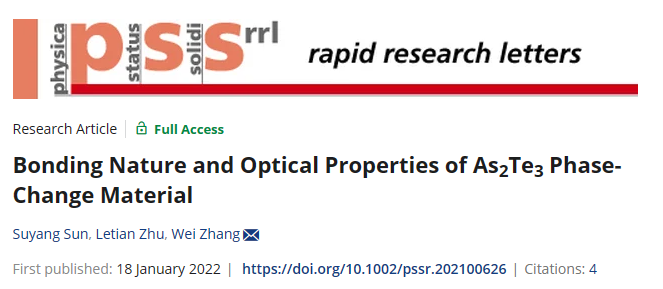
Chalcogenide phase-change materials (PCMs) are a promising candidate for advanced memory and computing technologies. PCM-based random access memories have entered the global memory market as storage-class memory. In these products, the element arsenic plays an essential role in the selector layers, but how arsenic stabilizes the thermal stability of the chalcogenide glass remains elusive. Herein, thorough ab initio simulations are carried out to understand the chemical bonding, electronic structure, and optical properties of an important arsenic alloy As2Te3 in both crystalline and amorphous forms. In comparison with the homologue alloy Sb2Te3, the importance of homopolar bonds in stabilizing the amorphous phase of As2Te3 is revealed. Also, a strategy for the design of As x Sb2−x Te3 alloys with optimal material properties for nonvolatile photonic phase-change applications is proposed.
Link: https://doi.org/10.1002/pssr.202100626